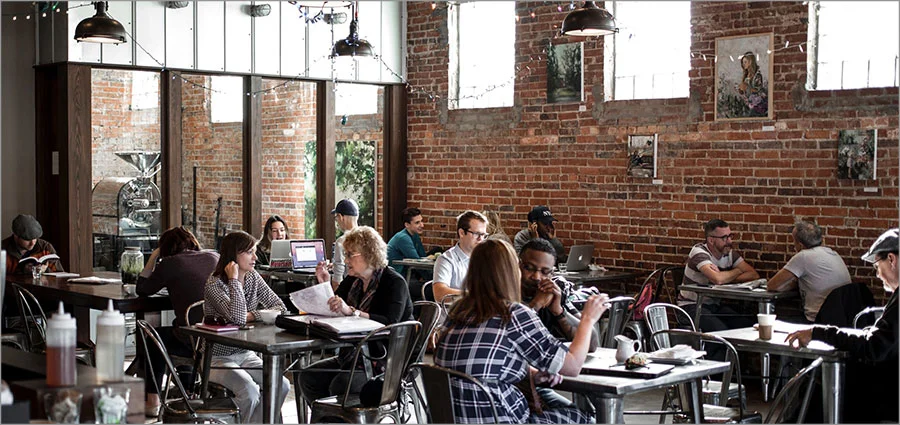4 ways of managing your restaurant finances to avoid financial risk in the future
Restaurants are often at the receiving end of a bad rap in today’s competitive industry.
Experts believe that most new restaurants in today’s competitive industry don’t survive in their first two years of service.
If that scares you, consider it an OVERSTATEMENT.
Fact is, there are still many successful restauranteurs leading the industry. How come?
While multiple factors account for the success of a restaurant, managing the restaurant finances the right way is one of them.
For example, reviewing a restaurant’s daily business and keeping payroll and inventory under control is one of the ways that fall into the tactics for managing finances for a restaurant effectively.
In this blog, we will review how to manage restaurant finances by highlighting facts, like cash flow, business costs, and other key details.
Understand & manage Cash Flow
Cash flow stands for an inflow versus an outflow of cash in a business, on a daily, weekly, and monthly basis.
Therefore, study the financial metrics of your restaurant to get the current financial health of your business. Make sure your business gets more cash flowing in than out to avoid a financial shortage later.
To better manage cash flow, fill out a cash flow statement for future outlays, like rent, mortgage, utilities, and food orders.
Check if there’s overspending caused by relying too much on credit from suppliers to buy foods. Besides, pay cash up front, as it often gets you a small discount with food distributors.
Analyze the business costs of a restaurant
To open a restaurant requires a certain degree of financial investment.
So, you must be familiar with how much money your restaurant will take to keep it going.
Understanding the business costs of a restaurant is one of the ways to manage your restaurant finances well.
Costs related to raw materials, labor, rent, utilities, equipment rental payments, etc. are the parts of equations you use and the budget you create to handle restaurant finances effectively.
There are two types of costs – Fixed costs, and Variable costs.
Fixed costs remain unchangeable as you do business. These costs are, for example, the rent (unchangeable, no matter the quantity of foods you serve) and payroll (doesn’t change, regardless of the numbers of customers you serve).
Variable costs refer to the costs you can control, such as the cost of your food and your salary.
Manage your restaurant payroll
Similar to cash flow, restaurant payroll is another area of responsibility you should focus on.
Managing your restaurant payroll doesn’t mean running your business understaffed.
Just keep them in numbers so that attending the customers can be managed better.
The problem with overstaffing a restaurant is overspending on the payroll, translating into an expensive business affair.
To avoid it, review your daily business from past years. And yes, cut short on the potential for overtime by laying out a clear policy mandating staff to ask before switching shifts.
Cost of Goods Sold (COGS)
To understand what everything costs to produce and serve to your customers, pay attention to Cost Of Goods Sold, or COGS.
They are direct costs of your business, helping you determine the gross profit of your restaurant business. COGS consists of all the necessary elements, from the food to the labor, to serve your customers.
Therefore, the statement of COGS gives you a real sense of your profit margin for each dish your business serves. Based on the calculation of COGS, you learn to price your restaurant menu, which is another way of managing your restaurant finances.
Other measures to manage restaurant finances
- Know the basics of finance – Understand equations and concepts applicable in financial management. Well, you don’t have to be an accounting genius to do these calculations. Just learn the financial basics. And, if understanding the whole things of financial basics sounds nerve-wracking, consider hiring an accountant.
- Save money – You can save money at your restaurant by investing in energy-efficient appliances and installing low-flow faucets. Besides, keep your inventory low, update your menu with correct food costs, and removing unwanted items that don’t sell.
- Daily business review – Daily business review will help you understand sales trends, payroll costs, customer counts, and predict future sales.
- Have a contingency plan – Be prepared to deal with any eventuality, like emergency costs (say, your boiler goes out of order). Have a business credit card or business line of credit to deal with unforeseeable costs in your business.
The Bottom Line
Effective management of restaurant finances enables a restaurateur to handle the business more efficiently, without risking financial shortage in their business.
This blog provides you with some of the crucial inputs to help you manage your restaurant finances.



